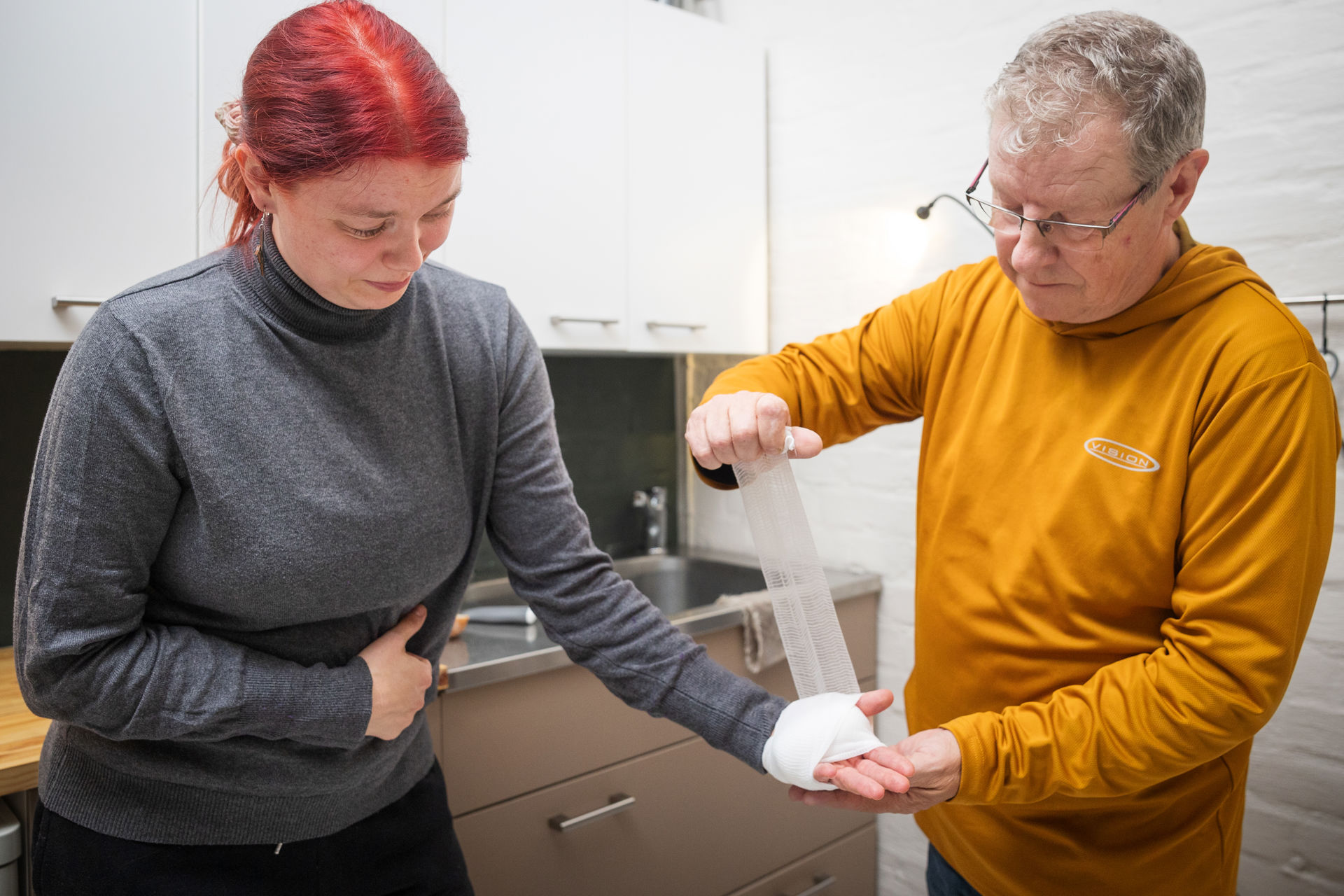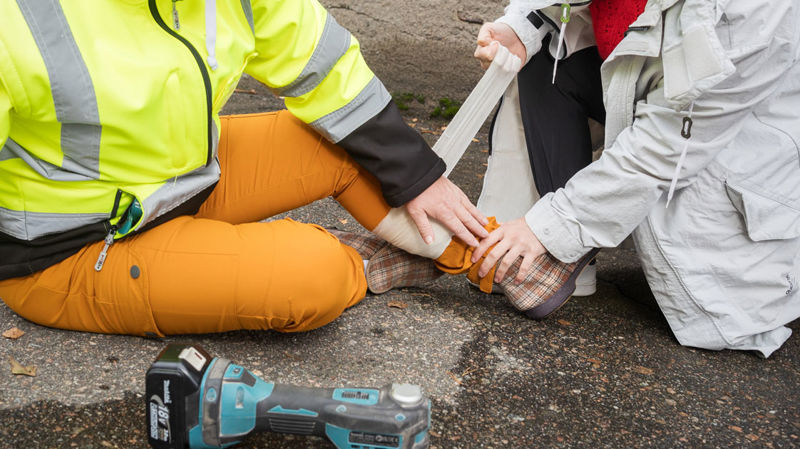09.04.2021
Wounds

Photo: Anne Kalliola
Knowing how to stop bleeding and dress a wound are basic first aid skills.
A wound is a damage in the skin or mucous membrane,
which may be associated with profuse bleeding. The right kind of first aid can reduce bleeding and help a wound heal.
The healing of the wound is affected by its size and location,
cleanliness, and the injury mechanism (wound type). Tattered or dirty wounds or wounds on mobile areas heal slower.
Some common causes of wounds:
- Scratch, or flesh wound: graze, falling.
- Puncture wound: needle, nail, or other sharp object.
- Cut: paper, knife.
- Bruise: falling, being hit, being squeezed.
- Bite: the bite of a human or animal.
- Gunshot wound: firearm, nailer, or similar.
Symptoms of a wound inlude bleeding, tattered or neat edges of the wound and a foreign object or dirt in the tissue.
First aid for wounds
- Stop the visible bleeding by applying pressure to the wound.
- Clean the wound under cool running water.
- If the wound is a small cut (made by a knife or paper, for example) press the edges together and close the wound with surgical tape.
- If there is a foreign object attached to the tissue (for example a splinter or a knife), do not remove it.
- Cover the wound with a protective bandage.
- Ensure that your tetanus vaccine is valid.
Seek medical care as soon as possible, if
- the wound is tattered, deep, or several centimetres long
- bone, muscle, or other tissue is visible in the wound
- there is a foreign object in the wound
- bleeding cannot be stopped
- there is dirt in the wound and you are unable to clean it
- the wound is a bite wound
- you need a tetanus vaccination
- the wound is in a joint area or on the face
- the wound is infected

Call the general emergency number 112 in an emergency.
Follow these instructions when making the emergency call
First aid instructions: removing a foreign object
09.04.2021